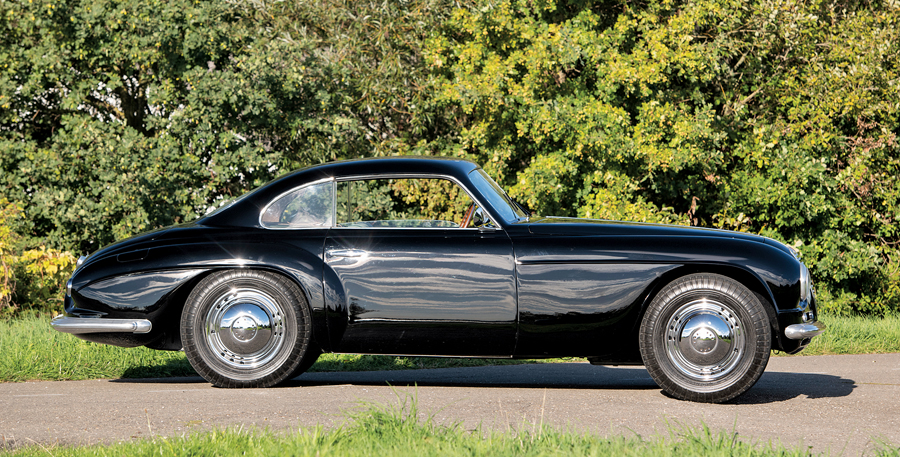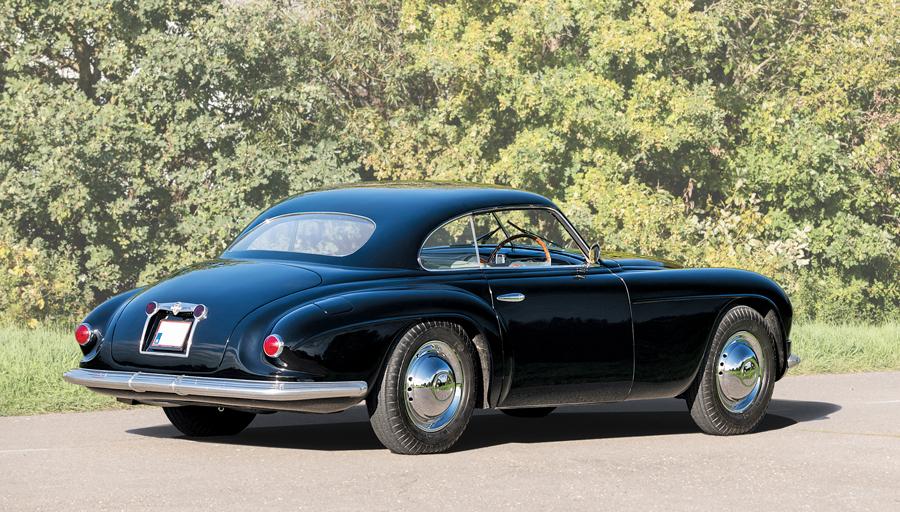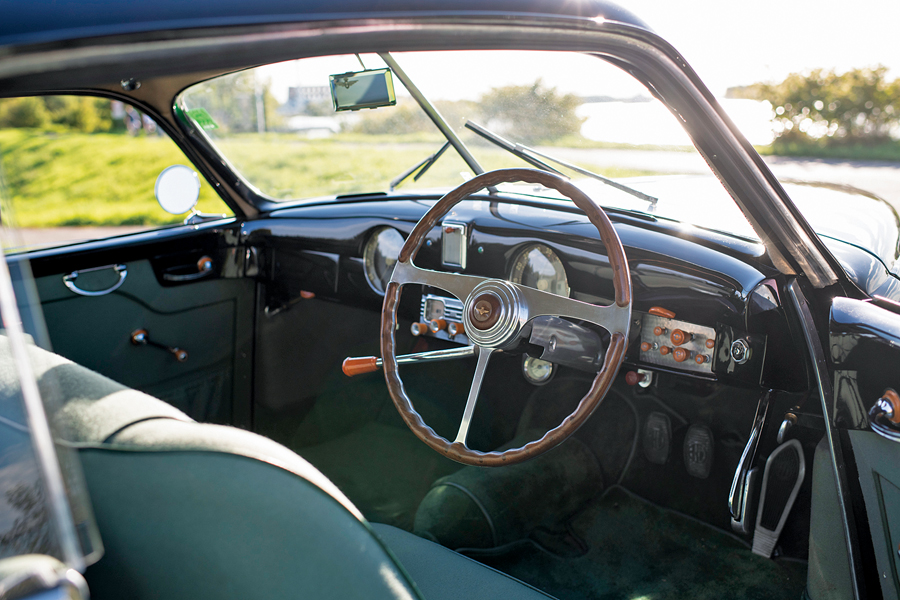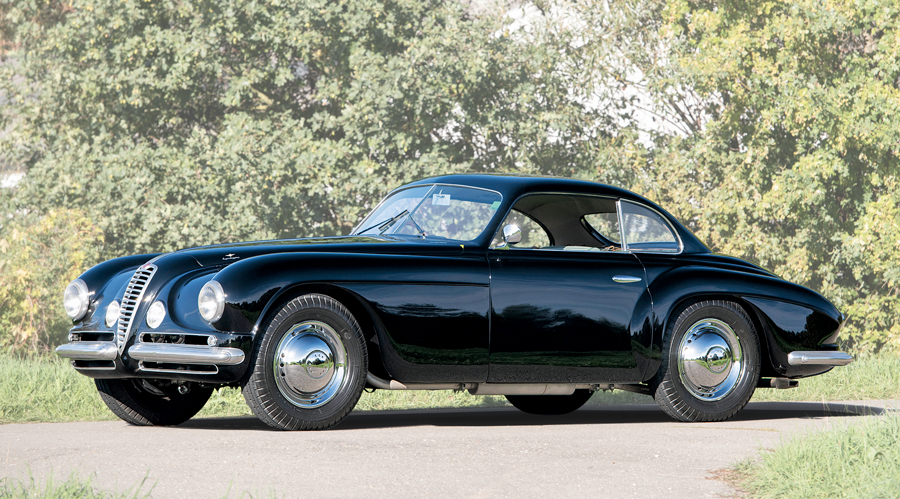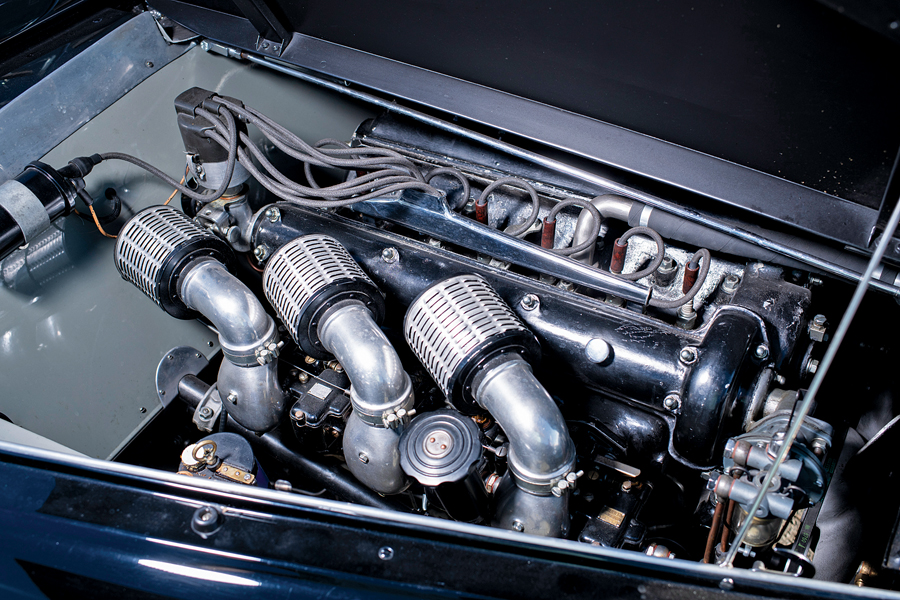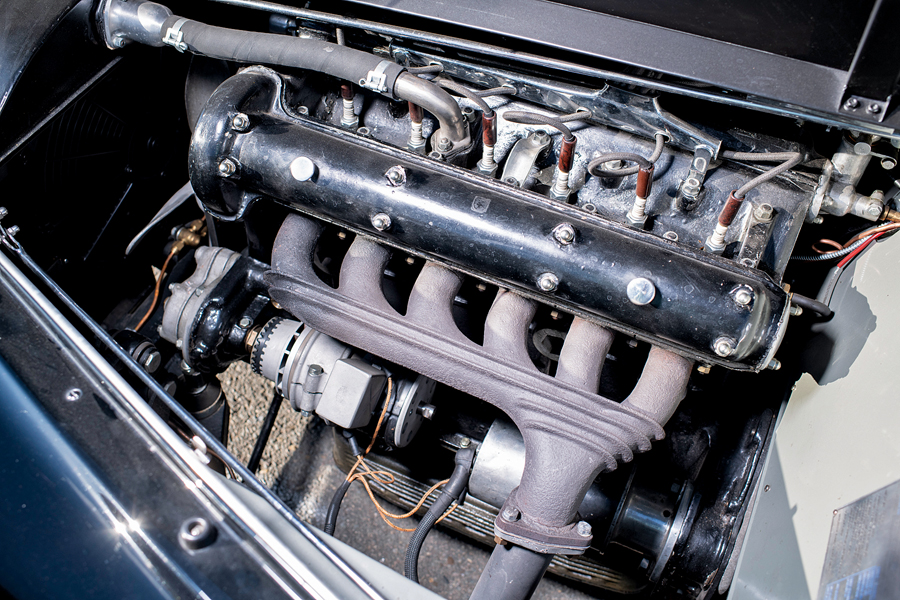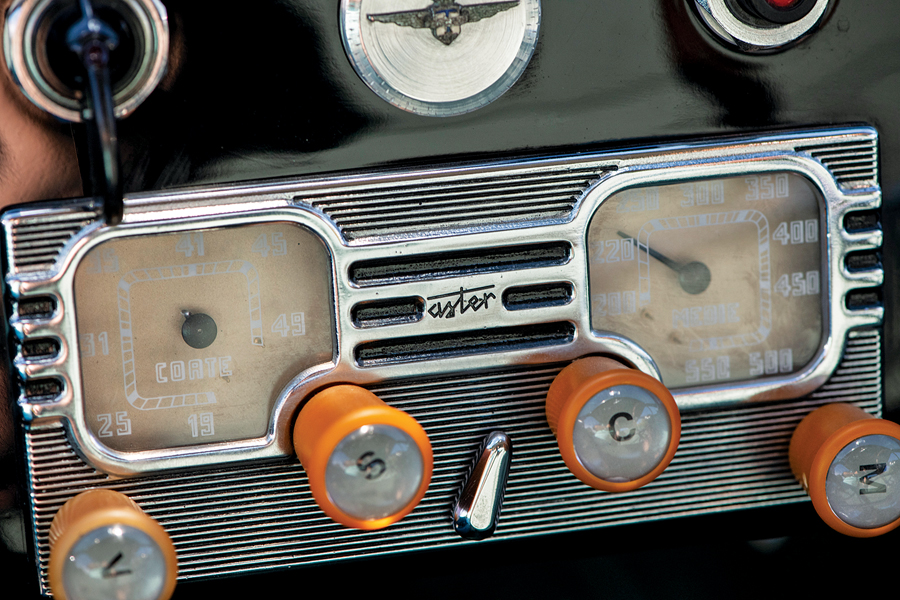Aright-hand-drive car, like all Alfa Romeos prior to the 1900 model, chassis 915910 was completed with a Villa d’Este coupé body by Carrozzeria Touring. It is believed to have stayed in Sicily for most of its life, although its early history is not known.
In 2006 the car was discovered in Sicily in barn-find condition and purchased as a restoration project by the previous owner, Mr. Dambacher.
Mr. Dambacher then commissioned a total restoration with no expense spared, which was carried out at Carrozzeria Grillo of Occhieppo Superiore, Italy, under the supervision of Dipl. Ing. Klaus Kukuk of Overath, Germany, a specialist in overseeing restorations. The restoration cost €400,000. Details may be found in a lengthy illustrated report on file compiled by Dipl Ing. Kukuk (inspection recommended) and the car also comes with old German registration and TüV papers, and current Belgian registration documents.
SCM Analysis
Detailing
| Vehicle: | 1951 Alfa Romeo 6C 2500 SS Villa d’Este Coupe |
| Years Produced: | 1949–52 |
| Number Produced: | 36 |
| Original List Price: | About $10,000 in the United States |
| SCM Valuation: | $851,000 |
| Tune Up Cost: | $1,150 |
| Distributor Caps: | 2 |
| Chassis Number Location: | Front frame cross member |
| Engine Number Location: | Front frame cross member |
| Alternatives: | 1935-39 Delahaye 135 MS, 1948-54 Talbot-Lago T26 Grand Sport, 1952-55 Bentley R-type Continental |
| Investment Grade: | A |
This car, Lot 46, sold for $529,276 (€460,000, €1=$1.158) at Bonhams’ Zoute Sale in Knokke-Heist, BEL, on October 5, 2018.
The Alfa Romeo 6C 2500 Villa d’Este is one of the most beautiful automobiles ever created. Add to that its superbly capable chassis, rarity and its passport into any and all events across the globe, and the car’s appeal is patently obvious. There were only 36 Villa d’Este Alfas built and most have well-known histories. They were expensive and very special cars when new, and they were usually not left abandoned in fields or barns, although some certainly were.
A key to collecting, whatever the object, is the collector’s access to information that can deepen connoisseurship. It helps us all grow and increases our appreciation of great objects, and it also allows us to make more-informed decisions about our collecting needs and requirements.
For those who collect for potential appreciation, such information is vital.
Expert advice, opinion and judgment are available all around. More than ever, a potential buyer is given the opportunity to learn as much as they can before they open their wallet. In researching this sale, it became clear to me that to a great extent, this is a story of opportunity lost — although curiously enough, it may not have resulted in an anomalous price.
A car with a story
Apparently, our subject car became, at some point in recent history, a Car With a Story.
Some suspected it was another car with the same chassis number, and/or one with seeming anomalies in body details — most notably a lower, more-tapered roof with thicker C-pillars than seen on other Villa d’Este examples. Our subject car’s lack of early history also caused doubts about its veracity.
Two 6C gurus, one German, one Belgian, prepared detailed reports on chassis 915910 to help prove its case as the genuine article and to remove any questions that hovered about the car. Bonhams clearly stated in its catalog description that the German report was on file for viewing onsite at the sale, and I was told that the Belgian report was also on hand.
I was also informed that apparently no one requested them.
While not quite as simple as making an Alfa SZ or TZ, a Carrozzeria Touring body can be formed to grace the suitably shortened chassis of a much-less-desirable variant. Today it seems quite amazing that anyone would erase from history a 6C 2500 of any description, but there was a time not long past when it was not only possible but also common.
Think of all the Ferrari 250 GTE 2+2s that died to create replicas of “sexier” 250 GTs.
With current values in the $400,000 range for an average GTE, it’s difficult to imagine destroying one today, but back when a “beater” could be had for $50k, the attitude was different. A dozen or more years ago a 6C 2500 Freccia d’Oro at less than $50,000 might have made a tempting base for a Villa d’Este re-creation, which would have had a restored value of $400,000.
The case for originality
The reports detailed the originality of the chassis-number stamping — and pointed out old corrosion on the inner structure that is consistent with undisturbed period construction.
As for the shape of the roof, all the Villa d’Este cars are artisan-built. No two of the small group are identical. Variations are not only to be expected, but two absolutely identical examples would be quite suspicious indeed. Touring had no assembly line or stamped body pieces.
As a rare car, the price range of the Villa d’Este has been pretty wide. In the past decade the best cars have gone from about $400,000 up to nearly $900,000. But the spread between examples with a fully known history, well preserved or with an expert recent restoration and those with needs or doubts has widened almost as much.
The bidders — and more importantly, the potential bidders — on this lot might have gone higher with their bids had they studied the documentation and asked questions.
The evidence shows that this car is clearly original and not a reproduction.
That bidders failed to do their homework didn’t keep this car from selling in a range appropriate for its condition. As an entertaining event car in very presentable driver condition, chassis 915901 should deliver great joy to its new owner. If invitations to and awards from leading international concours are sought, a thorough freshening would be called for, and that comes at a price. While the seller apparently lost money on this deal, the buyer may not have to — if a new buyer is willing to take the time to read. ♦
(Introductory description courtesy of Bonhams.)
